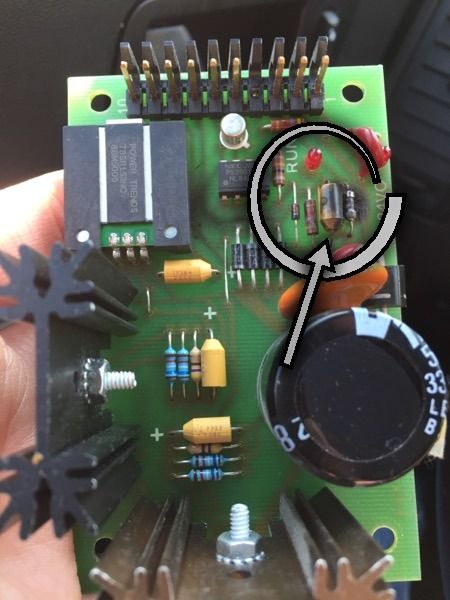- Joined
- Aug 16, 2013
- Messages
- 971
- Points
- 43
This is a 24VDC control board to an industrial dryer. It accidentally saw 120 VAC.. Oops! Not me.
Either way I volunteered to look at it for a friend. She is very knowledgeable but over worked. Plus she's hot and I like her *cough* I replaced the 220 ohm resistor but I'm not sure what the yellow buoy shaped component is?? Hmm I'm pretty sure the whole thing is toast but they are 400 plus new. The new one is already installed but I have this to play around with.
It actually powers up but doesn't send correct commands (before the fix) the scorched Mark near the chip tells me that could be an issue too.
These boards are handmade by a small town manufacturer somewhere but they will not sell individual parts they gotta make money somehow. My guess that rectangular chip to the left contains proprietary information.
they gotta make money somehow. My guess that rectangular chip to the left contains proprietary information.
Also I DONT know the full story. I was just brought the board.

Thoughts?
Jefferson
Either way I volunteered to look at it for a friend. She is very knowledgeable but over worked. Plus she's hot and I like her *cough* I replaced the 220 ohm resistor but I'm not sure what the yellow buoy shaped component is?? Hmm I'm pretty sure the whole thing is toast but they are 400 plus new. The new one is already installed but I have this to play around with.
It actually powers up but doesn't send correct commands (before the fix) the scorched Mark near the chip tells me that could be an issue too.
These boards are handmade by a small town manufacturer somewhere but they will not sell individual parts
Also I DONT know the full story. I was just brought the board.

Thoughts?
Jefferson
Last edited:






